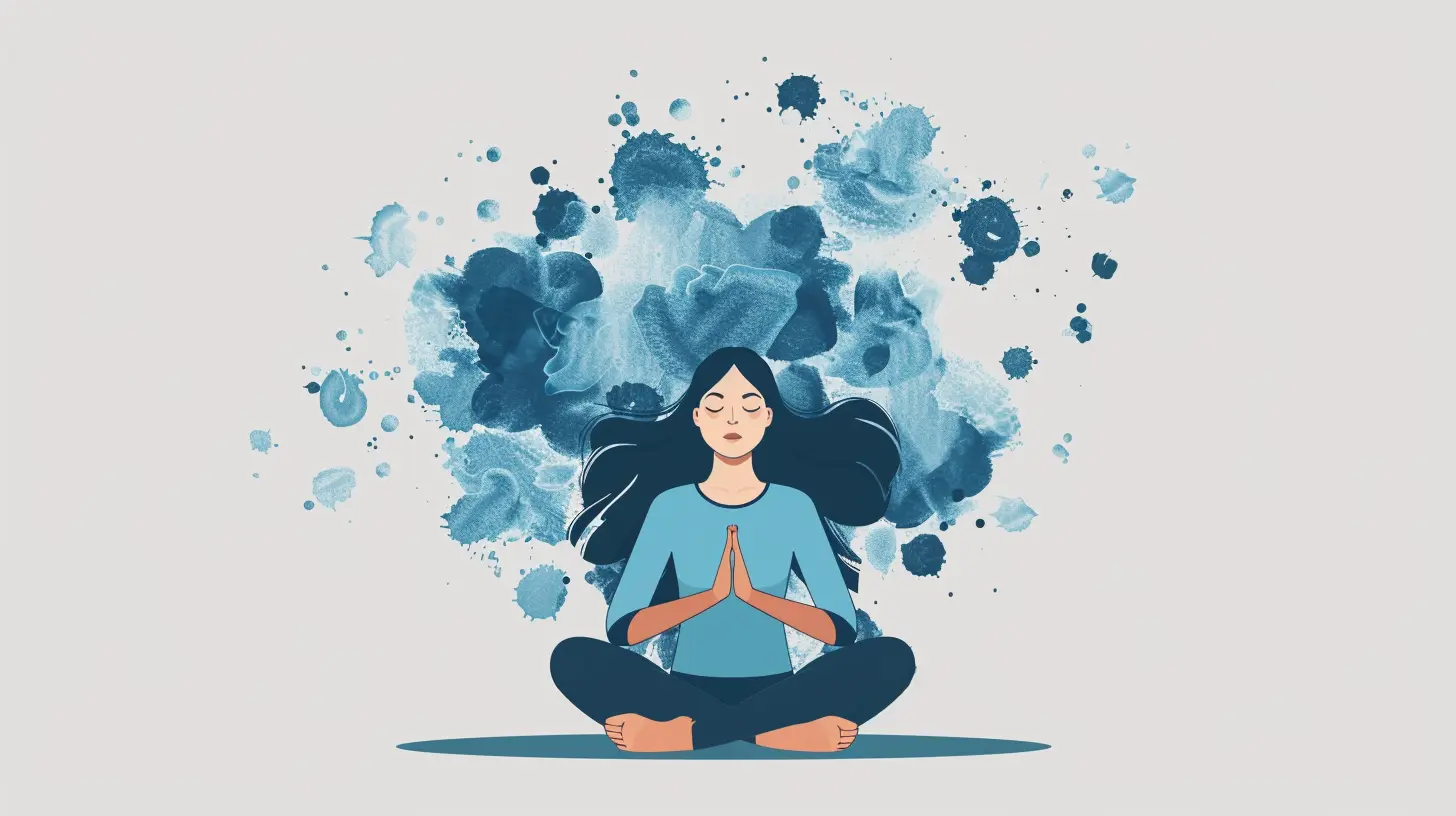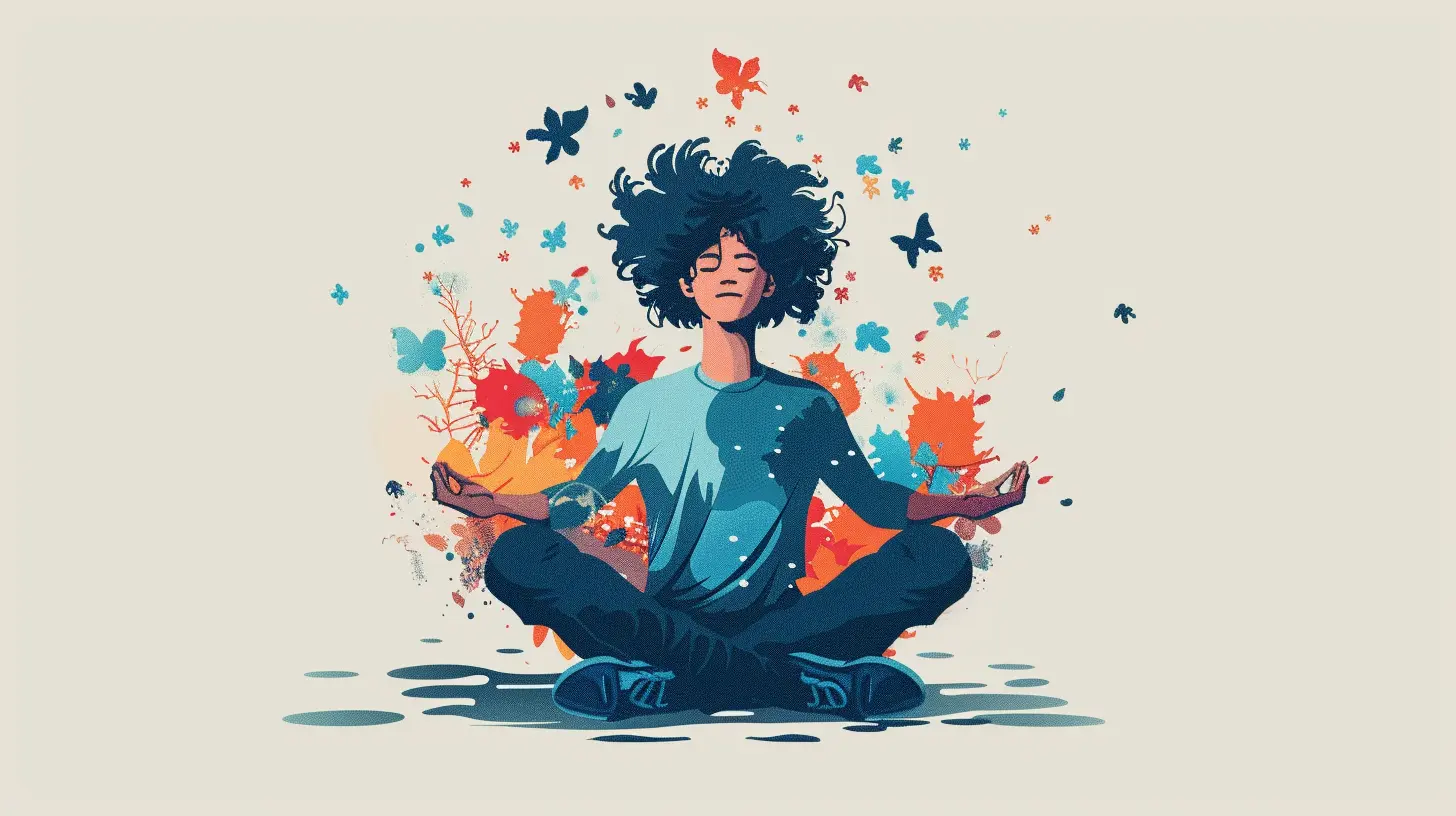Meditation for Anxiety: Techniques to Calm the Overactive Mind
12 September 2025
Okay, let’s be real for a second. Anxiety is basically your brain’s way of throwing a rave at 3 AM when all you want to do is sleep in peace. Cool, thanks, brain. Whether it’s a racing heart, sweaty palms, or that ever-so-lovely “Oh no, I said something dumb three weeks ago during a Zoom meeting” spiral—it’s exhausting.
If you've ever tried to outthink anxiety... how's that working out for you? Right. That’s where meditation shuffles in like a wise, chill grandma with a cup of herbal tea and says, “Honey, quit stressing over nonsense.”
Let’s break down how this ancient practice (that by some miracle existed before phone notifications) can help calm your overactive mind. Spoiler alert: No incense or Himalayan singing bowls required. Unless you're into that—no judgment.
What Even Is Meditation?
So before we dive into the brain-soothing goodness, let’s tackle the eternal question: what are we actually doing when we meditate?Are we thinking about nothing? Are we falling asleep sitting up? Floating into another dimension?
Not quite.
Meditation is simply a mental workout. You’re training your attention. It’s like going to the mental gym, except you don’t have to wear leggings or pretend you know how to use a kettlebell.
Imagine your thoughts are hyper toddlers on a sugar high—meditation is the experience of calmly watching them without joining their chaos. You're learning to observe the madness without letting it pull you into a five-hour TikTok doom-scroll spiral.
Sounds needed, right?
How Anxiety Hijacks Your Brain
Before we dig into the magical world of meditation techniques, let's talk about why your brain is acting like a hyper-caffeinated squirrel in the first place.Anxiety is your body’s ancient alarm system, the one that used to protect our ancestors from saber-toothed tigers. Fast forward to today, and now it goes off during work emails, social events, grocery store small talk, and basically any situation ever.
Your amygdala (the panic button of your brain) is basically yelling "FIRE!" even when there's just a mild inconvenience. That’s where meditation comes in—it's like mentally unplugging the fire alarm for a minute to figure out if anything’s actually burning.
Why Meditation Is the MVP for Anxiety Relief
Let’s just say it: meditation is like the chill friend who reminds you to breathe and reassures you that everything is, in fact, not on fire.Here’s why it works:
- 🧠 It reduces overactivity in the brain areas linked to fear and worry.
- ❤️ It slows down your heart rate and lowers blood pressure.
- 😌 It helps increase your ability to respond to stress instead of impulsively reacting.
- 🧘 It teaches your brain to be here, now—rather than spiraling through 37 worst-case scenarios.
In short, it helps you stop living in “what-if” land and move into “right-now” territory. (Population: you, and your slightly less frantic thoughts.)
The Top Meditation Techniques to Calm the Chaos
We’ve established that meditation = mental chill pill. Now let’s get to the juicy stuff: how to actually do it without getting bored or falling asleep.1. Mindfulness Meditation: The Anti-Overthinking Superpower
A.K.A. The MVP of mental clarity.Mindfulness meditation is all about paying attention—to the breath, to the body, to literally whatever is happening, without trying to fix it. The magic is in the non-judgmental observation.
Wanna try it? Here’s a super simple way:
- Sit somewhere comfy (no pretzel legs required).
- Close your eyes if you want.
- Pay attention to your breath: in… and out…
- Notice when your brain wanders off to what you’re having for dinner or that awkward thing you said three years ago.
- Gently bring your focus back to the breath.
That’s it. You just meditated. No monk robe required.
2. Guided Meditation: When You Need Someone to Talk You Down
Not ready to sit in silence with your thoughts like you're in a horror movie? Enter: guided meditations.They’re basically meditation with training wheels—someone walks you through the mental maze so you don’t get lost.
Try apps like:
- Calm
- Headspace
- Insight Timer (free and fabulous)
Just pop in your earbuds, hit play, and let someone else help you talk your anxiety off the ledge.
3. Body Scan Meditation: Head to Toe Chill
This one’s like a full-body exhale. It helps you reconnect with your body (which anxiety makes you forget even exists most days).How it works:
- Lie down or sit comfortably.
- Start at your toes and slowly move your awareness up your body.
- Notice sensations, tension, or weird tingles.
- Breathe into each area and release tension like you’re exhaling stress.
It's basically a massage... but from the inside, and also free. Win-win!
4. Loving-Kindness Meditation: Anxiety’s Worst Enemy
Let’s get real—anxiety is often tied up with self-criticism. Enter loving-kindness meditation, where you send warm, fuzzy vibes to yourself and others.No, it’s not cheesy. Okay, maybe it’s a little cheesy. But it works.
Repeat phrases like:
- May I be safe.
- May I be happy.
- May I be mentally calm.
- May I live with ease.
You can even send these wishes to others—yes, even that person who cut you off in traffic. Why? Because resentment is emotionally expensive, and you’re on a budget.
Meditation Tips for People Who Think They’re “Bad at It”
Oh, you’ve tried meditating and it didn’t work? Welcome to the club. Spoiler alert: you're not bad at meditation. Your brain is just loud. That's kind of the point.Here are some helpful reminders:
- ✔ You don’t need to empty your mind. That’s impossible unless you’re a rock.
- ✔ You will get distracted. That’s the training part—bringing your attention back.
- ✔ You don’t need to sit still for hours. Even 3 minutes is a win.
- ✔ It's okay if it feels weird. New things usually do.
Meditation isn’t about doing it perfectly. It’s about showing up, even if your mind is a hot mess express that day.
How Often Should You Meditate for Anxiety?
You might be wondering, “Do I need to become a full-time monk to see results?”Good news—nope.
Start with 5–10 minutes a day. That’s it. You can totally fit that in between doomscrolling and compulsively checking your email. (Let’s be honest, that email can wait.)
Over time, you’ll notice:
- You don’t react as much to stressful situations.
- Your inner critic starts to chill.
- You become way more aware when your thoughts spiral.
Consistency matters more than duration. Think of it like brushing your brain—just do it daily and try not to forget (your anxiety will notice if you do).
Meditation Isn’t a Magic Wand (But It's Pretty Dang Close)
Look, meditation isn’t going to suddenly erase your anxiety like a Disney fairy godmother. You won’t float off into a zen cloud of eternal bliss after your first session. (If you do, teach us your ways.)But with regular practice, it does make the noise quieter. The grip looser. And the 3 AM anxiety monsters a little less powerful.
It’s not about perfection. It’s about progress.
Things to Keep in Mind While Meditating (Yes, Even If You Have ADHD)
Short attention span? Welcome to the future. Here's how to meditate when your mind is basically a browser with 47 tabs open:- Use a timer. (Start with 3-5 minutes. You’re not climbing Everest.)
- Keep your eyes slightly open if closing them makes your thoughts louder.
- Journal right after to dump any lingering chaotic thoughts.
- Meditate after something habitual (like brushing teeth) to build a routine.
Meditation is flexible. Your practice gets to look like you, not some monk in a mountain cave.
Real Talk: When Meditation Isn’t Enough
Let’s not pretend meditation solves everything. It’s a powerful tool, but if your anxiety is overwhelming, chronic, or interfering with daily life, it might be time to tag in a pro—like a therapist or counselor.There’s no shame in that. Using all the tools in the toolbox? That’s just efficient adulting.
Also, combining meditation with therapy? Chef’s kiss.
Final Thoughts: The Mind is a Drama Queen—Meditation is Its Chill Cousin
If your mind is over here staging a Broadway-level drama about that weird comment you made in a meeting, meditation is the minimalist friend reminding you that it probably doesn’t matter.Meditation doesn’t mean your life becomes a utopia. It means you learn how to face the chaos with a little less panic and a little more peace.
Will your thoughts still race sometimes? Heck yes. But now, you’ll have the tools to wave at them casually and say, “Hey, I see you... not today.”
So take a deep breath, sit your beautiful anxious self down, and start small. Your overactive brain will thank you (eventually).
all images in this post were generated using AI tools
Category:
MeditationAuthor:

Ember Forbes
Discussion
rate this article
1 comments
Kate McInnes
This article offers valuable techniques for using meditation to manage anxiety, emphasizing mindfulness and breathing exercises that effectively calm an overactive mind. Highly recommended!
October 8, 2025 at 4:37 PM

Ember Forbes
Thank you for your positive feedback! I'm glad you found the techniques helpful for managing anxiety.


